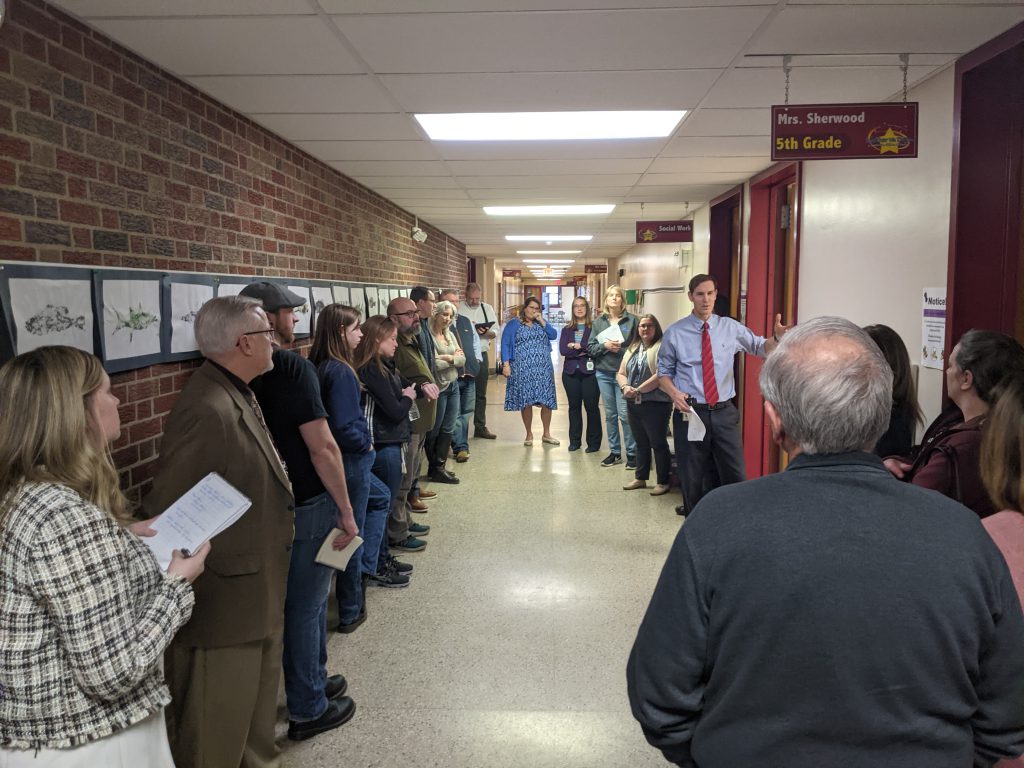Capital Project Committee to Present Recommendations to the Board in June
Last summer, the board voted to create a capital project committee to tour the schools, study and rank the importance of identified areas of need, and make repair, upgrade and improvement recommendations. The large representative stakeholder group is made up of community members, faculty and staff, board members, administrators, students, architects, and engineers. The committee has been meeting twice a month since January to tour school facilities and is expected to submit recommendations to the board by June. The board will review and finalize the recommendations this summer and a final proposal is currently estimated to be put to voters in October 2023.
Every five years since 1983, the board has asked voters to approve an improvement plan that address the district’s most pressing infrastructure needs. Much like a home, school buildings see wear and tear from daily activities as they age. If you consider the size of the district’s schools and the number of students served each year in the spaces (460 to 1,000 students), then you’ll have an idea of what happens to the schools.
“Regular improvement projects help the district address the normal aging of our buildings and keep our facilities modern and our learning spaces up to date,” says Dr. Christopher Abdoo, Assistant Superintendent for Support Services and the Capital Project Committee Co-Chair. “The board has yet to determine the scope of the project, but since the district does capital projects on a consistent basis the impact on the tax levy is likely to be in line with previously approved referendums.”
Regular projects also allow the district to maximize the New York state building aid that is available for the maintenance of school facilities. Building aid currently reimburses BH-BL 76% of eligible expenses.
One factor that must be considered is the enrollment growth that BH-BL has been experiencing in recent years. There are more than 200 additional students enrolled in grades K-5 than there were seven years ago. This growth, coupled with increased programmatic needs, is leading to overcrowding in certain areas. For instance, spacing for small-group or one-to-one academic and social-emotional assistance is limited and often occurs in partitioned areas within other rooms or hallways.
“Every square inch of our buildings is being used, which is great,” says Committee Co-Chair James Ireland. “But it’s also extremely eye opening for all of us to see just how limiting these old buildings can be for students and staff who are learning and teaching in today’s educational environment.”


